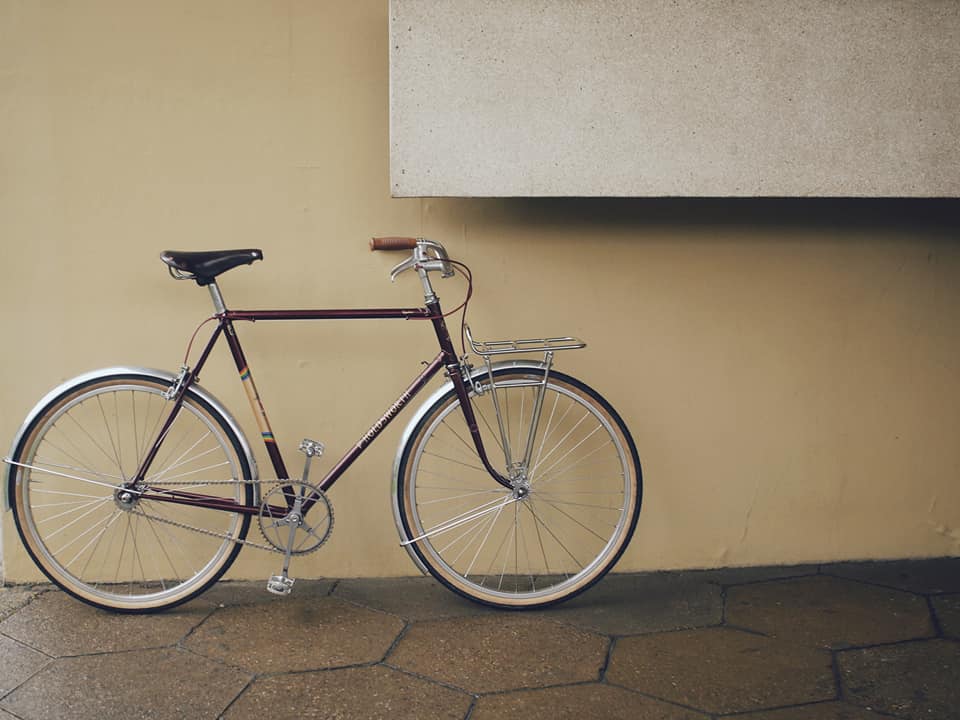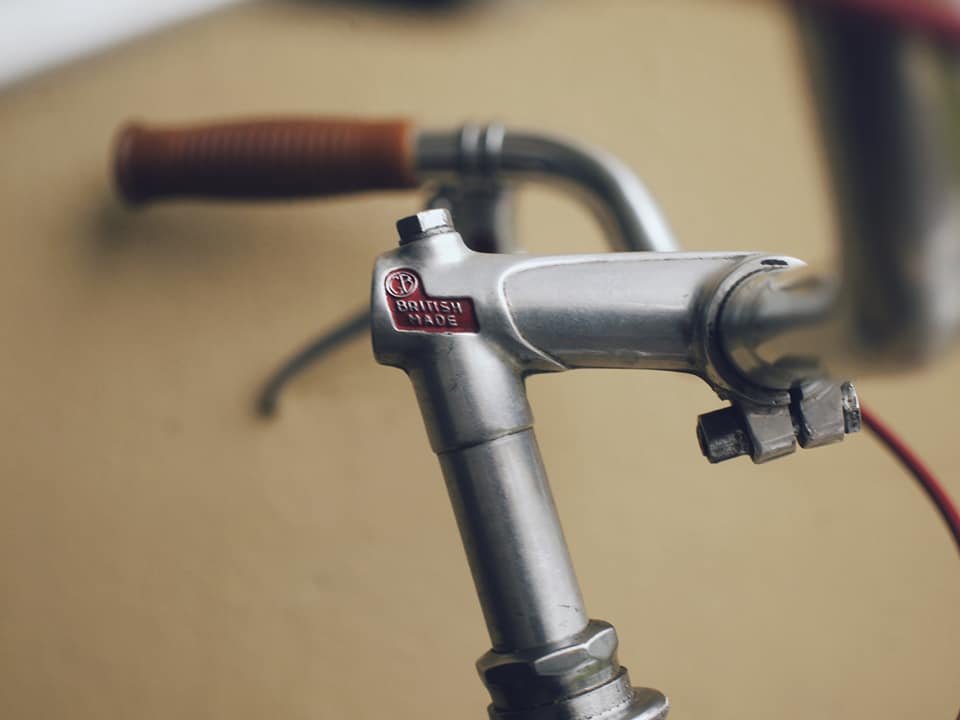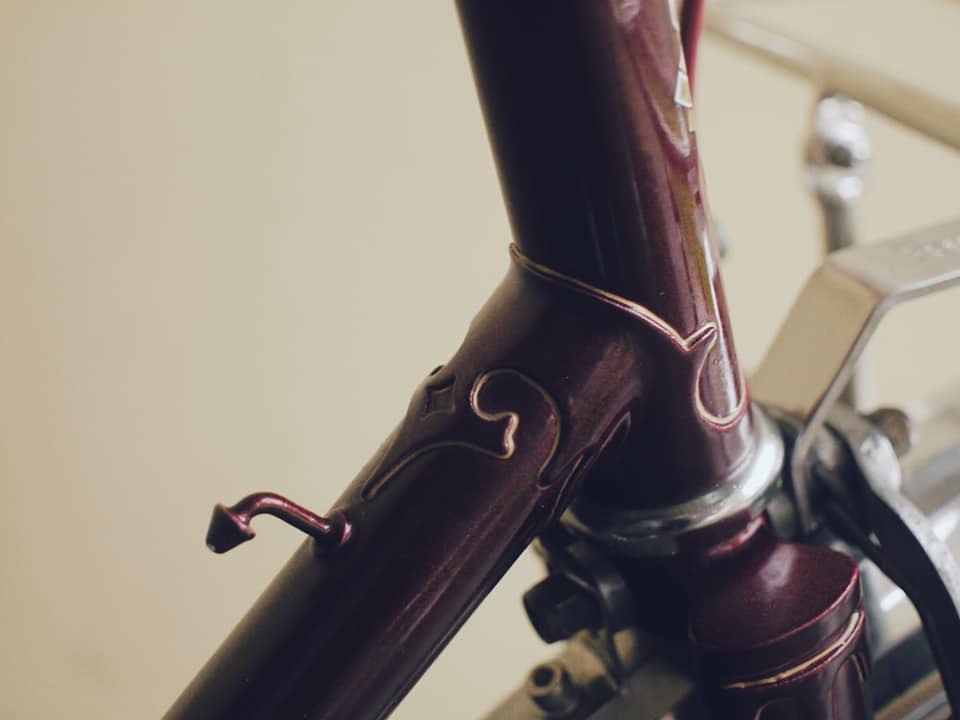
For a couple of years now, I’ve been spending a lot of my time geeking up on, building, riding and evangelising to anyone who will listen about this sort of bike. With my Ephgrave project (more on that soon), now approaching its final phase, and having just built this Holdsworth for Julian along similar, or similarly informed, lines, we thought it about time we had a blog piece about it too… For twenty years or so – albeit interrupted by the war – there was a fashion in British frame building for low-trail front ends. Practically speaking, this meant reasonably steep head angles, and relatively large amounts of fork offset (rake). The reason for this fashion was the misplaced belief that trail, or higher trail, slowed down the steering of a bike and made it less nimble. In practice this was something of an unhelpful and misguided simplification – and by the mid-50s, the fashion / prevailing orthodoxy had changed along with the accepted wisdom, and more bikes had begun to be built with higher trail numbers again and the misnomer about slowed steering having been disproved and the value of higher trail figures providing greater stability at speed having been recognised. And while geometry changed in Britain over the coming decades, the low-trail mini-boom of the years immediately before and after the war was never revisited.
The oversight in this precis of history was in failing to recognise something the French cyclotouristes and constructeurs had known for many years – that if you intend to carry weight on the front end of your bicycle, then a low-trail front end is probably what you want. The low trail numbers mean the weight is easy to control, easy to turn, and equally easy to return to a straight line once the turn is complete; the stability lost in decreasing trail figures is regained in ‘pneumatic trail’ – by using wider tyres. (Much has been written about bicycle trail and its effects on handling in recent years – and it is not our intention here to go over ground already covered very thoroughly elsewhere.) As we have said, this basic knowledge was not lost on the French, and all the bikes designed to carry weight placed that weight (predominantly, in the case of heavily loaded bikes) in front – be that the panniers full of camping gear carried by tourist(e)s, the randonneurs’ day-supplied in handlebar bags, or the great stacks of newspapers hurried through the crowded Parisian streets by the porteurs.



Julian came to us wanting to upgrade from a bicycle he had bought new a couple of years previously – one of a number of off-the-peg ‘porteurs’ now available on the market. Regrettably, most (all?) of these off-the-peg options are porteurs in name at most – being in essence conventional road bikes (in terms of their geometry) with swept back handlebars and a big rack bolted on the front, retaining the narrow high pressure tyres and a front end with mid-to-high trail numbers. Julian’s steed was one of these bikes. He wanted a “version 2.0” of his old bike which made our job clear and straightforward.
Of the frames we had available that would suit this build and be an appropriate size, Julian chose this 1953 Holdsworth Cyclone, not least for its exquisite lugwork. The post-war low-trail was ideal for the front rack Julian wanted to fit, and with the frame having been built for 26 x 1 ¼ wheels, the conversion to 26 x 1 ½ (650B) – was readily achieved, allowing us to fit the super-lightweight, extremely supple , easy-rolling and wonderfully plush 38mm Grand Bois tyres which would so transform the ride. Using these tyres was fundamental to the build: achieving a comfortable, upright riding position relies on using high-volume, low-pressure tyres, since more weight is on the saddle and much less on our (naturally shock-absorbing) arms and legs; using low-volume, high-pressure tyres would result in much of the road shock being transmitted straight up the spine. For a high-volume, low pressure tyre to roll fast and not to feel ‘draggy’ relies on it being lightweight and supple. These Grand Bois tyres do exactly that, and so with the addition of a wider B17 Special saddle (not pictured) all the boxes of Julian’s brief would be ticked.
With the basis of the build established, other choices could be made on aesthetic grounds, and there the very classic looks and feel of the Cyclone were certainly not to be messed with: a cottered crankset, period GB brakes and stem, new Velo Orange Left Bank bars and mudguards, and a Brooks saddle and Rustines grips all kept the styling very classic, allowing the beauty of the frame to speak for itself.
The bike rides like a marshmallow dream – floating over imperfections and ironing out bumps and shocks wherever they’re met. The front rack and head geometry mean carrying weight is no inconvenience, and in fact in moderate amounts improves the handling. But the cyclone has a racing pedigree, and when you put the hammer down it still responds as it should. (After all, we’re not building tractors here…..)



